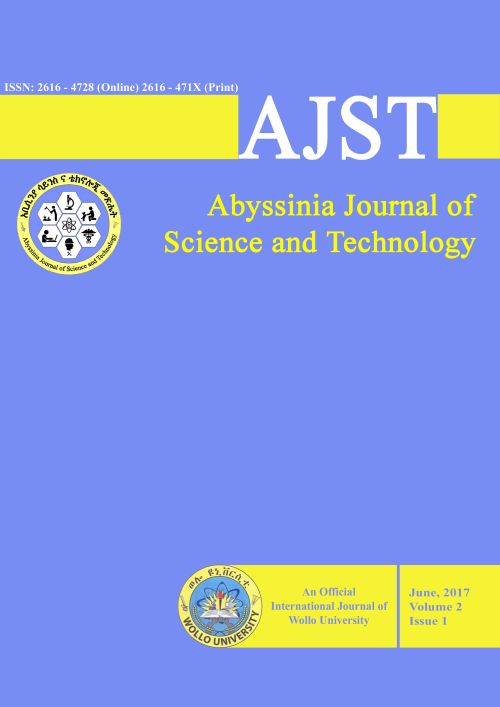Main Article Content
Multivariate analyses of phenotypic diversity in Northeast Ethiopian tef [Eragrostis tef (Zucc.) Trotter] landrace collections
Abstract
The knowledge of genetic diversity is valuable for germplasm conservation and for crop improvement. An investigation was undertaken at Sirinka and Kobo Research Stations in 2006 to assess phenotypic diversity of 160 landraces and 6 varieties of tef and to identify the most important traits in differentiating the landraces. The result showed appreciable ranges of values for traits like days to maturity, plant height, biomass- and grain-yield suggesting the presence of sizable variability in the tef landraces. Grain yield was positively and significantly correlated with plant height (0.245**), panicle length (0.22**), biomass (0.907**), harvest index (0.474**) and days to heading (0.284**). The stepwise regression analysis suggests linear increment in plant height, harvest index and biomass yield could lead to significant increase in tef grain yield. In the principal component (PC) analysis, 74% of the total variability was explained by three PCs. Biomass yield from the first PC; and day to heading, grain-filling duration, plant height, panicle length and culm length from the second PC axis were important in discriminating the landraces. Two-step cluster analysis divided the landraces into three groups. Landraces with late flowering, short grain-filling period, high biomass, high grain yield and high harvest index were grouped in cluster II. Landraces in cluster II could therefore be used as parent lines for future breeding programs. Biomass yield, harvest index and plant height could be set as indirect selection criteria to improve yield of tef.







